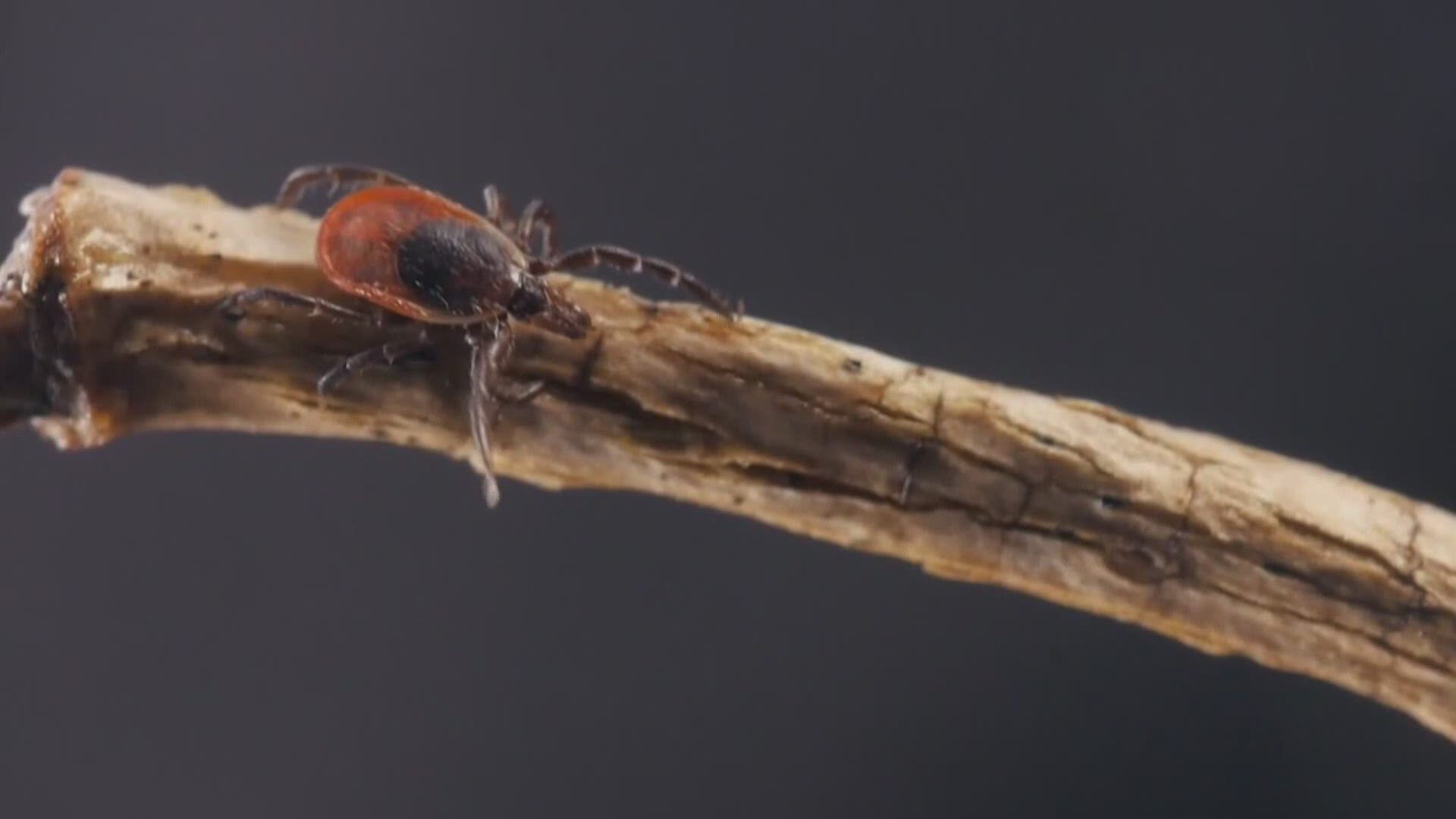GORHAM, Maine — It's Tick Week on NEWS CENTER Maine as we bring you the latest information on deer ticks and the diseases they carry.
The Maine Medical Center Research Institute says July is when the latest crop of deer ticks are emerging and out for blood. According to the Maine Center for Disease Control & Prevention, deer ticks carry bacteria that causes Lyme and other diseases. Called "nymphs," these young ticks are in the second stage of their life cycle and are the size of a poppy seed. The CDC says nymphs are difficult to see and can hide in crevices in the body, making daily tick checks so important.
For Josh and Adrienne Beaulieu, daily tick checks have become a way of life.
"We make sure that it's something that we do routinely every time they go outside," Josh Beaulieu said.
Tick checks are a routine they started as soon as their daughters could walk on their own. Their three-year-old daughter, Maddie, and her two-year-old sister, Ellie, always wear long sleeves and tuck their pants into their socks when they're outside. Then comes spraying their shoes and boots with bug repellent containing DEET.
The Beaulieus love to hike in the woods behind their home. After a hike, they do a thorough tick check before the family goes back inside. They check the girls' hair, scalps, and other parts of their bodies. Tick checks take place at bedtime as well. Two years ago, late at night, the couple found a tick on Maddie.
"It was embedded in the back of her scalp under her hair and now we are really diligent about checking," Josh said.
Dr. Sean McCloy treats patients for Lyme disease and other tick-borne infections at Integrative Health Center of Maine. McCloy says transmission of Lyme and anaplasmosis, a common tick-borne coinfection, can happen in less than 24 hours, making regular tick checks so critical.
"When you brush your teeth, check every square inch of your body, and you are looking for something the size of a poppy seed," McCloy said.
Lyme may cause a bulls-eye rash, fever, headache, fatigue, and could spread to the heart, joints, and nervous system if left untreated. McCloy says if caught in the early stages, Lyme and tick-borne illness can be treated successfully with antibiotics. Some people may get infected but not have any symptoms.
"After a tick bite that is known to be a deer tick bite, I will treat them with 20 days of antibiotics, based on evidence-based guidelines, whether they have a rash or not," McCloy said.
Besides protective clothing and tick checks, the CDC recommends using EPA-registered repellents on skin. Another repellent, permethrin, is considered very effective against ticks, but should only be applied to clothing and allowed to dry before going outside.
Experts also recommend taking a shower after being outside and putting clothes in the dryer on high heat for 10 minutes to kill ticks after you come indoors.
Ticks can ride along with your pets, so make sure you're checking your dogs every time they come in from outdoors. Veterinarians also recommend using a tick preventative to protect your furry friends.
For more information from the American Veterinary Medical Association, click here.

